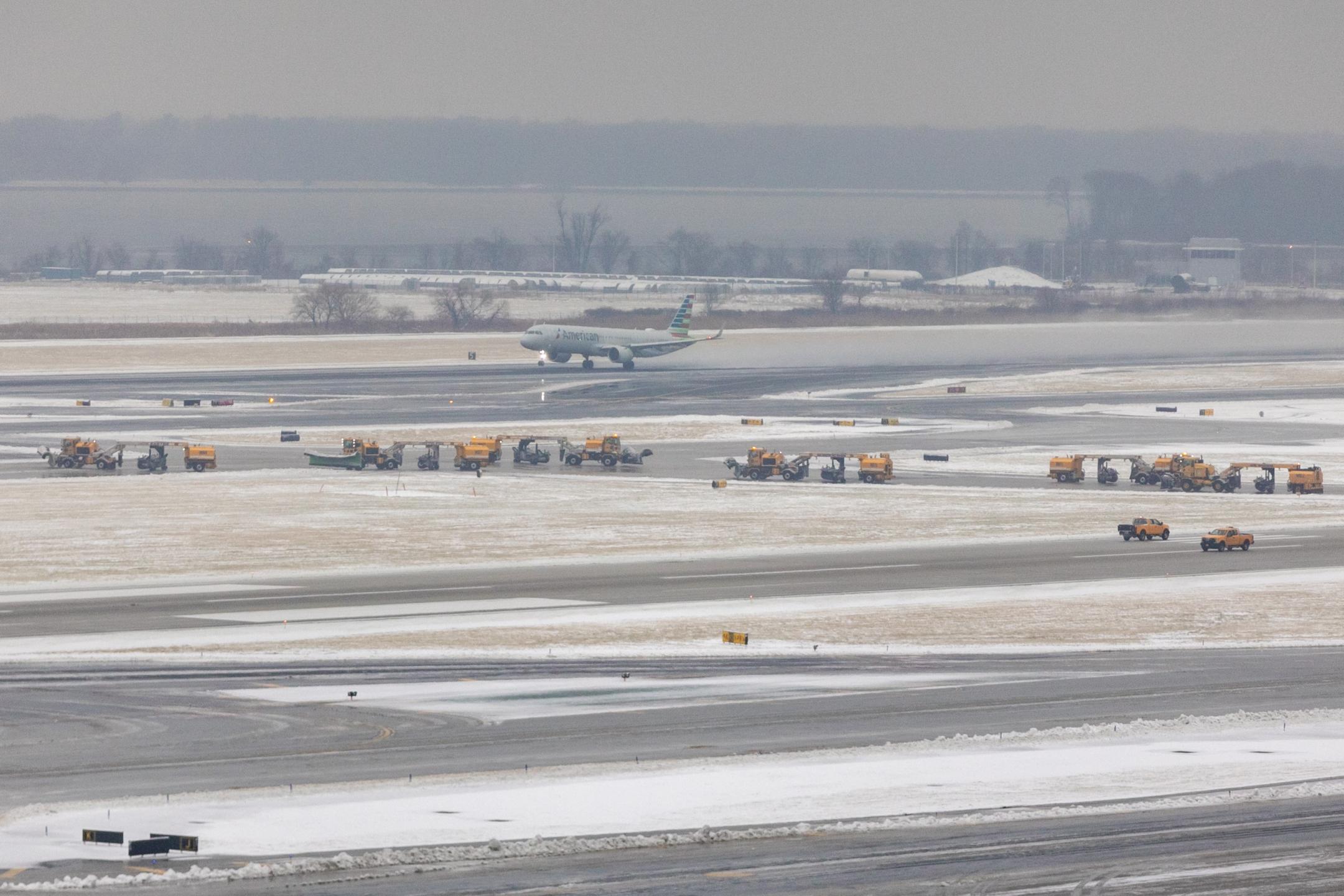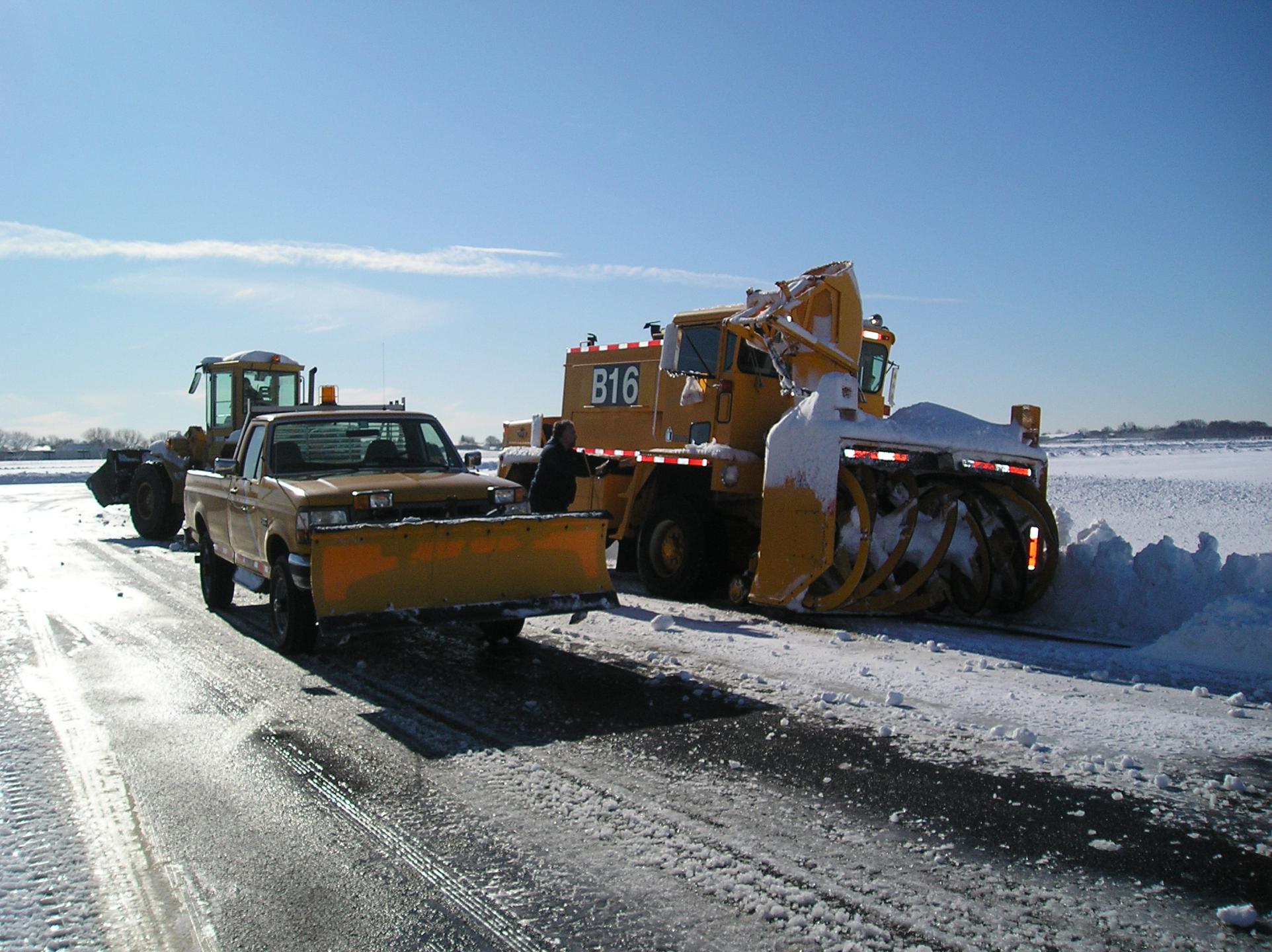Whether it be a light dusting or a full-on blizzard, even just a few flakes can disrupt air travel. City of Philadelphia Department of Aviation Crews are prepared to battle the snow, sleet, slush and ice by releasing the… “Snow Jawn” and an army of plows, jet brooms and runway deicing trucks at Philadelphia International Airport (PHL) and Northeast Philadelphia Airport (PNE).
PHL PHL has 40 million square feet of surface on its runways, taxiways and aprons that require snow removal — that’s the equivalent to 631 lane miles of snow or the distance from Philadelphia to Lexington, Kentucky. Add the additional 11.9 million square feet (188 lane miles) of roadways, I-95 ramps and parking lots in and around PHL, that’s a trip to Pensacola, Florida.
PHL has 40 million square feet of surface on its runways, taxiways and aprons that require snow removal — that’s the equivalent to 631 lane miles of snow or the distance from Philadelphia to Lexington, Kentucky. Add the additional 11.9 million square feet (188 lane miles) of roadways, I-95 ramps and parking lots in and around PHL, that’s a trip to Pensacola, Florida.
PHL’s 46-piece snow artillery includes 12 Multifunction Plow/Broom Units (MBs) that plow and sweep runways and taxiways at once with their 22-foot plows and 20-foot brooms. The MBs help keep PHL from closing by reducing runway clearance time, providing more capacity for airline travel.
Working in concert with the MBs is a Jet Broom (JB), which plows, brooms and chemically treats runways and taxiways at the same time. This machine, with a 28-foot plow, 20-foot broom and storage tank that can hold more than 2,000 gallons of liquid deicing fluid, promote safety — fewer snow removal vehicles are needed operating in adverse conditions.
In keeping with the aviation industry’s tradition of naming aircraft, PHL crews selected monikers for their “battle gear”:
- MBs are Snow Angel, Ice Wookie, Multifarious, Snowmizer, Snow Slayer, Time Bandit, Arctic Fox, Snow Jawn, Nor’easter, Yeti and Storm Breaker
- JBs are Terra Hawk and Silver Hawk
- Runway De-icing Trucks are Heatwave, Tropic Breeze and Heatmizer
PHL’s Snow Watch cadre works around the clock to keep planes flying and vehicular traffic flowing. Work begins long before snow starts falling by training staff, checking forecasts, and pre-treating runways, taxiways, and roadways. Once the team knows what type of weather system is headed toward Philadelphia, it will plan accordingly for staffing and have equipment ready to respond: salt trucks for landside roads and runway deicer trucks to pre-treat surfaces before snow arrives. When there is more than half-an-inch of wet snow or two inches of dry snow on the runways, plow and broom vehicles are put into service.
PHL’s salt barn can hold up to 2,000 tons of salt and its equipment has a capacity for approximately 90,000 gallons of liquid deicing fluid.
PNE
PNE is Pennsylvania's busiest general aviation airport, with an average of 140-based aircraft. Operations on the 1,150-acre airport also include law enforcement, medivac and organ transplant. It is imperative to keep PNE open during winter snow and ice events.
Preparation for the snow season begins well in advance, with preseason snow equipment training for crews beginning in October. When a snowstorm is on the way, the PNE maintenance crew will spend the day before making sure vehicles have fuel and that trucks are loaded with the necessary solutions and are ready to use. Operations will monitor the storm to determine when it will start, whether it will be a dry or wet snow, and whether sleet or freezing rain is expected. Knowing the moisture content assists in determining the treatment to use on the airfield and when to use it.
maintenance crew will spend the day before making sure vehicles have fuel and that trucks are loaded with the necessary solutions and are ready to use. Operations will monitor the storm to determine when it will start, whether it will be a dry or wet snow, and whether sleet or freezing rain is expected. Knowing the moisture content assists in determining the treatment to use on the airfield and when to use it.
PNE has pavement sensors installed on its runways and taxiways. These sensors aid in determining when to treat the pavement, usually just prior to the snow falling and if the pavement is warmer than 26 degrees to keep the snow from bonding to the surface. Snow duty crews arrive one-to-two-hours before the snow begins. Snow removal typically begins once the snow has accumulated to half an inch in depth. If the rate of snowfall is light to moderate, the crew will plow all the taxiways and runways, a process that takes about two hours. Based on the intensity of the snowfall, employees will be on the airfield removing snow from two-to-six hours at a time. If the snow is coming down hard, Operations might close one runway and some taxiways and focus on keeping only one runway and the main taxiways open.
PNE has five large trucks with 20-foot plows, a JB, and two runway deicer trucks for use on the airfield. For deep snow, the crew has two snow blowers that take in the snow and throw it out into the fields. For landside, there are three pickup trucks with small plows and one salt truck.






